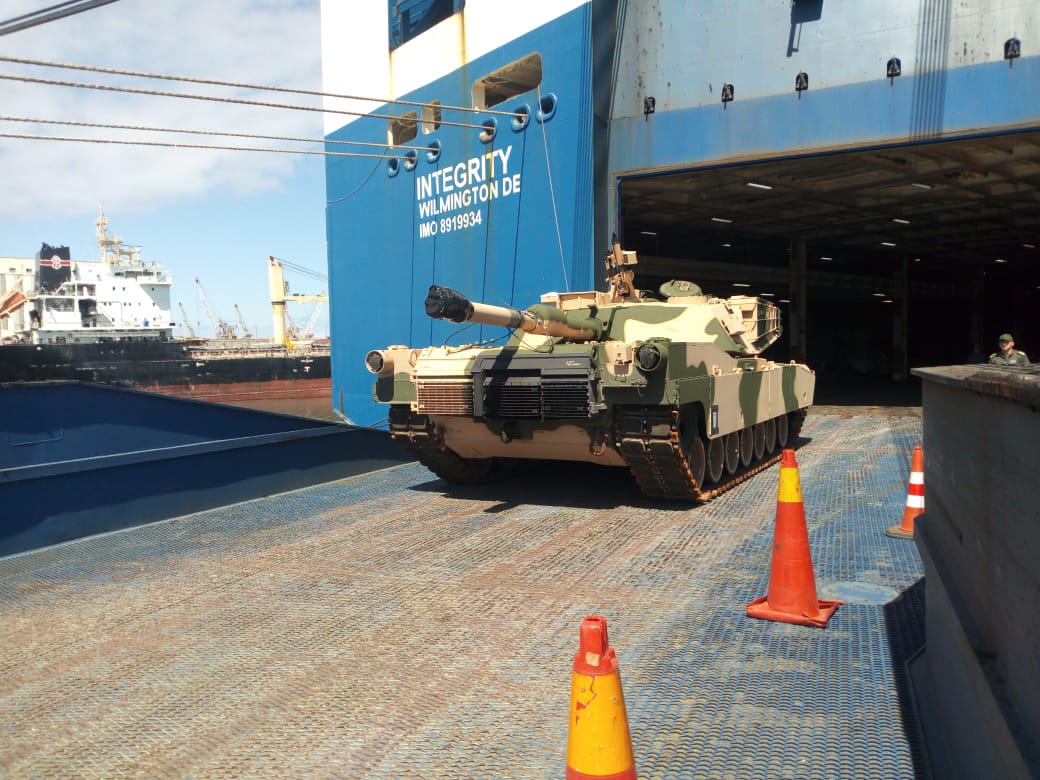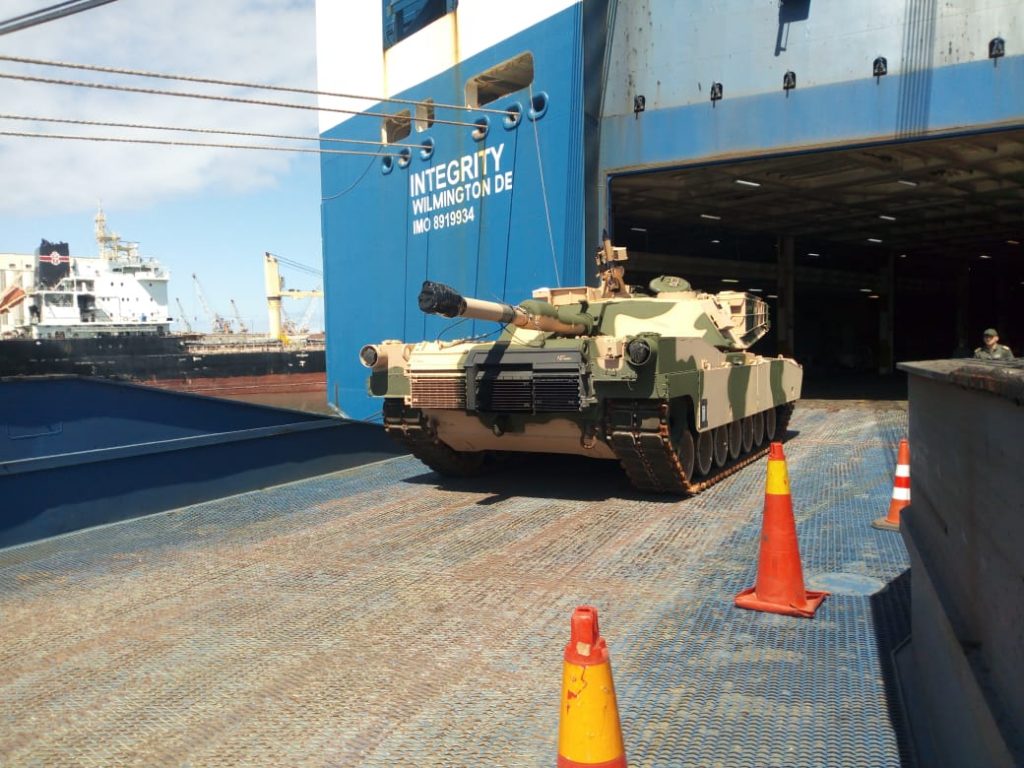
By Ms. Terri Stover, USASAC Public Affairs
Morocco strengthens its capacity to stabilize region and fight terrorism through partnership with U.S.
The Kingdom of Morocco is currently the largest U.S. weapons buyer in the 53-country region covered by U.S. Africa Command (AFRICOM). U.S. assistance to Morocco enhances its capacity to promote security and prevent acts of terrorism, and its ability to meet current and future threats. The support has had a positive impact beyond Morocco, in both the Middle East and Africa. Morocco is emerging as a major partner for regional stabilization efforts and fighting terrorism, which furthers U.S. security.
One of the United States’ oldest partnerships is with Morocco. According to the U.S. Department of State, “Morocco formally recognized the United States by signing a peace treaty in 1786. Full diplomatic relations began in 1905, and normal diplomatic relations were resumed after U.S. recognition of Moroccan independence in 1956. The two countries share common concerns and consult closely on regional security and sustainable development.”
Scott Huther, AFRICOM regional operations division chief at the U.S. Army Security Assistance Command (USASAC), said the Kingdom of Morocco recently requested 222 M1A1 Abrams tanks in an upgrade to its tank fleet that began in 2016. The transfer of the Abrams tanks progressed rapidly, with the scheduled delivery to the Royal Armed Forces completed in August. This significant sale has assisted Morocco with building its capacity. DOD provided the vehicles through the Excess Defense Articles program, where excess equipment is offered at reduced or no cost to eligible foreign recipients on an “as is, where is” basis in support of U.S. national security and foreign policy objectives.
“These tanks continue to modernize the Kingdom of Morocco’s military and will enhance its readiness to meet current and future needs,” Huther said. “The Moroccans are very astute regarding their equipment requirements, and the fact they chose to use our depot system to refurbish their tanks speaks to the strength of the relationship our militaries share. The customer has choices for where to obtain equipment, but because of the relationship between the U.S. and the Kingdom of Morocco, plus the total-package approach provided by the U.S. military, Morocco chose the M1A1 tank, our excess equipment.”
The U.S. Army’s top priorities include readiness to deploy, fight and win, and to modernize and evolve to build greater capabilities and capacities. However, the U.S. military cannot both engage in multiple conflicts around the world and modernize the force without enhancing the strength of partner nations. So, also included in the top Army priorities is enhancing the professional relationships, training and overall coordination with our allies and partners.
While multinational exercises are one way to do this, the initial building blocks that allow the U.S. to develop relationships with allies and partners are security cooperation and assistance. The security cooperation and assistance mission is a vital foreign policy tool, and sales of military equipment are part of it. USASAC, headquartered at Redstone Arsenal, Alabama, manages and implements the Army’s security assistance programs and foreign military sales for more than 150 countries.

One of more than 50 Abrams tanks that were delivered to Morocco in June, bringing total deliveries to more than 170 of the 222 requested. (Photo courtesy of U.S. Army)
Foreign military sales have a fundamental value to Army readiness and to the military’s interoperability with international partners. This is particularly important in the AFRICOM region, where supporting relationships is key to addressing the significant terrorist threats in the area.
According to Amy Weichel, chief of the Morocco Program Office for Main Battle Tank Systems at the Program Executive Office for Ground Combat Systems, the initial vehicles underwent a complete overhaul and were rebuilt at the Anniston Army Depot, Alabama. Anniston was responsible for the teardown and rebuild of the tanks, including all the components except turret armor. General Dynamics Land Systems installed the exportable turret armor at the Joint Systems Manufacturing Center in Lima, Ohio. Using this production process, which results in like-new vehicles, another 72 vehicles were produced.
Anniston and General Dynamics overhauled an additional 150 tanks through the Abrams integrated management process. This is a partnership between the two entities; Anniston does the teardown, General Dynamics does the reassembly. The rebuild of a used M1A1 tank with this process enables the installation of modifications and emerging technologies. The purchase was beneficial in employing U.S. personnel at the Joint Systems Manufacturing Center during the early production.
“The tank production supports the U.S. industrial base, providing work to the depots and contractors, and can result in mutual costs savings with economies of scale,” Weichel said. “It also adds to the long-standing relationship between the U.S. and Morocco, allowing them to modernize their military forces.”
Huther also pointed out that “the U.S. Army’s modernization is like a domino effect—our partners, like Morocco, are pushing just as hard to have compatible and comparable equipment to ensure continued logistic support.”
Along with large systems, other necessary tools provided through foreign military sales include radios, training ammunition, spare parts, tools, training aids and simulators. Personnel training is also part of the program, which allows the Army to train partners on the equipment as well as to develop leaders in partner nations. “This is all part of the total-package approach, which ensures the capability is not only developed but sustained,” Huther said.
USASAC is the lead for the security assistance enterprise of U.S. Army Materiel Command, which is USASAC’s headquarters. Through the support of Army Materiel Command entities such as the industrial base and its life cycle management commands, USASAC is able to assist partners with their readiness, whether it be through new or excess material and equipment, or sustainment.
Huther also emphasized that evolving an Army Materiel Command line of effort is about setting the conditions for integrating new technologies and systems, and that each AFRICOM partner is doing this in its own way. “Every facet of the USASAC mission is in support of U.S. national security and is designed to support strategic readiness,” he said. “We will continue to look at ways to improve our processes and help ensure that when it’s time to conduct coalition operations, our partner nations are ready and indisputably capable.”
This article will be published in the October – December 2018 issue of Army AL&T magazine.
Subscribe to Army AL&T News – the premier online news source for the Army Acquisition Workforce.
![]() Subscribe
Subscribe







